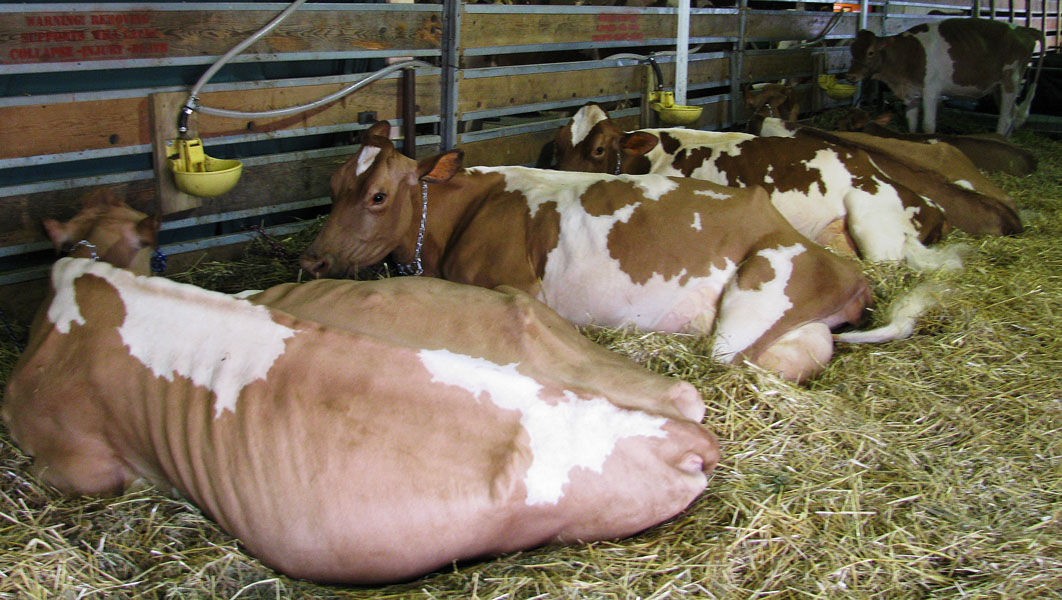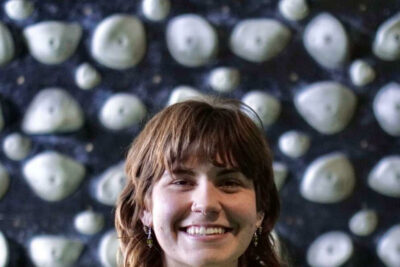Most students at Goshen College have some hobby or interest that very few others know much about. For several past and present students, including myself, that interest is for an animal: the dairy cow. Maybe surprising for some, it’s also a reason to take off some days of classes.
Last week was World Dairy Expo in Madison, Wis., the largest annual dairy event in the world. Every year, over 10,000 people from over 80 countries come to World Dairy Expo to show their cows in intense competitions, talk to hundreds of dairy and agriculture-related companies, and visit with friends and acquaintances from around the world.World Dairy Expo is sort of like a combination of a county fair and National Mennonite Youth Convention: lots of cows and lots of energy, but a whole different mindset.
Though I was the only Goshen College representative this year, a few other recent and current students have attended, including Deanna Kronk.
Kronk, an ‘08 graduate and continuing aide to the track and field team, visited World Dairy Expo in 2004, but also took off from her GC classes in 2008 to exhibit three heifers in the National Guernsey Show at the Expo.
“I enjoyed it,” she said, “minus the driving around for two hours looking for the hotel.”
The week of show, hotels are booked out all around Madison, so many people have to drive outside city limits for a room. If you’re not from the area, that can lead to driving adventures (or headaches, depending on your view).
Kronk said she enjoys Expo because of her love of showing and because she is able to re-connect and meet with other dairy people who she only sees at the “big shows.”
Among the hundreds of companies and organizations advertising and teaching visitors, hundreds of exhibitors, like Kronk and myself, bring their prized cattle to compete on the “colored shavings,” woodchips dyed a particular color to coincide with the Expo’s theme for the week. Past themes have included “Building Bridges, Making Connections” in 2008 and “The Art of Dairy” in 2005. Show ring decorations, cattle awards, and publicity materials all relate to the theme.
Owners typically sleep in the barns with their animals and wake up around 4 or 5 a.m. to wash their cows and heifers in the cold and often snowy Wisconsin weather. They then stay by them all day to make sure they stay clean.
Different breeds of cattle show throughout the week according to age, with as many as 50 cows competing against each other. An official judge, often with an assistant, looks over each one, then places them in order from first to last place, the number of which depends on how many cows are in a class. By the end of the week, a Grand Champion cow is chosen from every breed and one goes on to be named Supreme Champion.
Cows are evaluated by physical traits that all add up to higher milk production, which is what makes the money for a dairy farmer. For example, judges look for a deeper chest, which gives a cow’s heart and lungs more space to grow, healthy feet and legs, because if a cow can’t walk, she won’t be able to walk to food or water, and an udder with a higher, wider rear udder attachment, which gives the udder more volume to hold milk.
Competitions are also held at World Dairy Expo for youth and college students in how to judge dairy cattle.
Junior Julia Stoltzfus hasn’t been to the Expo, but she wants to go. She has, however, attended one of the three other dairy shows in the U.S.: the North American International Livestock Exposition in Louisville, Kent.
Stoltfzus competed in the national dairy judging competition there in 2005 with her high school’s team. They looked at 10 classes of cows and five of heifers, giving five sets of “reasons.” In a judging competition, contestants place classes of 4 cows in the order they believe they should be placed. Contestants give vocal “reasons” to defend their placings.
All around, World Dairy Expo, along with the other national dairy shows, is a cornucopia of dairy-related things: exhibits on quality cheese, milk, yogurt and ice cream, a dairy cattle competition, dairy judging competitions, and agricultural companies and associations galore.
Kronk recommends World Dairy Expo for Goshen students–even those not at all related to dairying.
“It’s not like you need to be a dairy farmer to go there,” she said, calling it a cross-cultural experience.
Along with learning about all aspects of the dairy industry, World Dairy Expo gives visitors a chance to talk with people from Brazil, Germany, Greece or New Zealand.
Interested in learning more? Dates for next year’s World Dairy Expo are set for Sept. 28 to Oct. 2. To learn more, visit www.worlddairyexpo.com.

